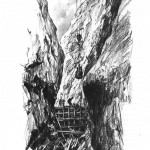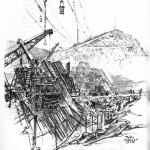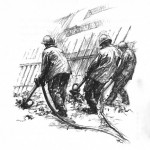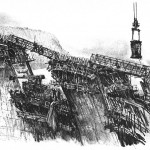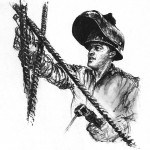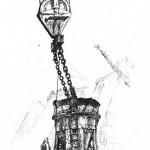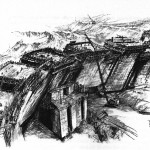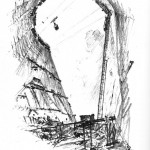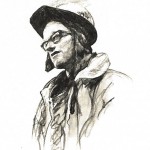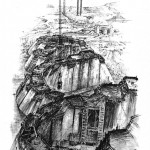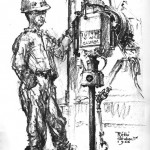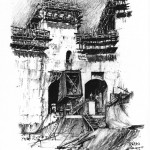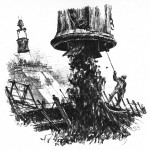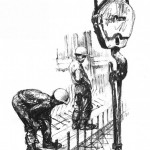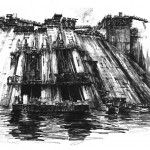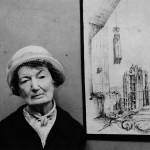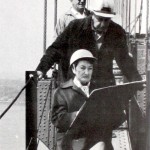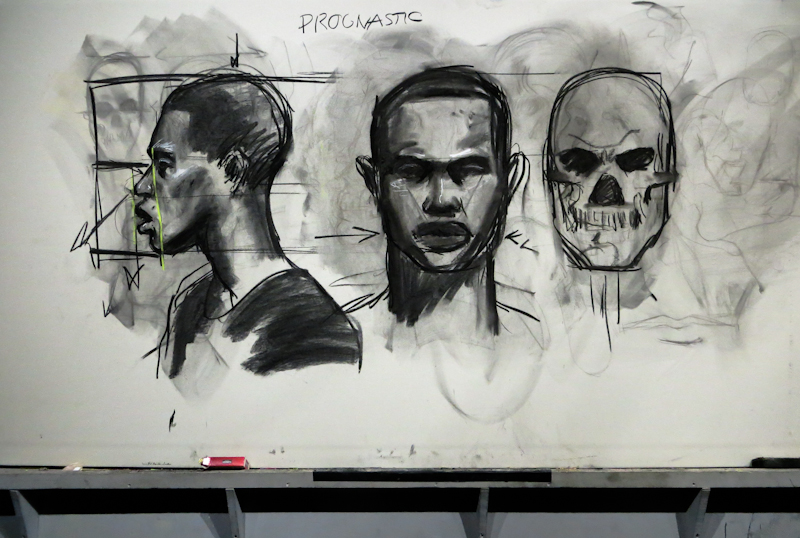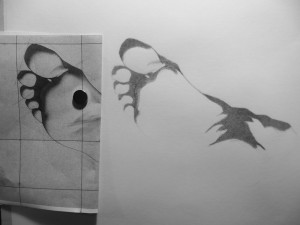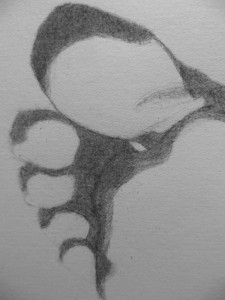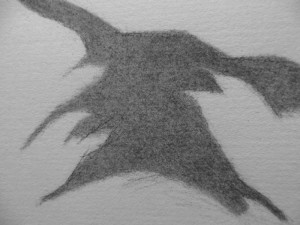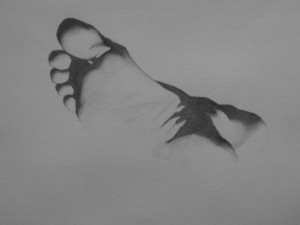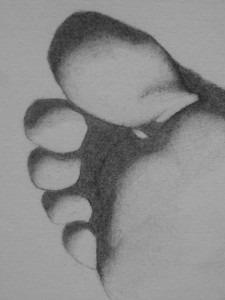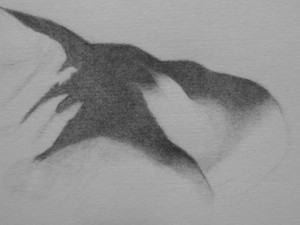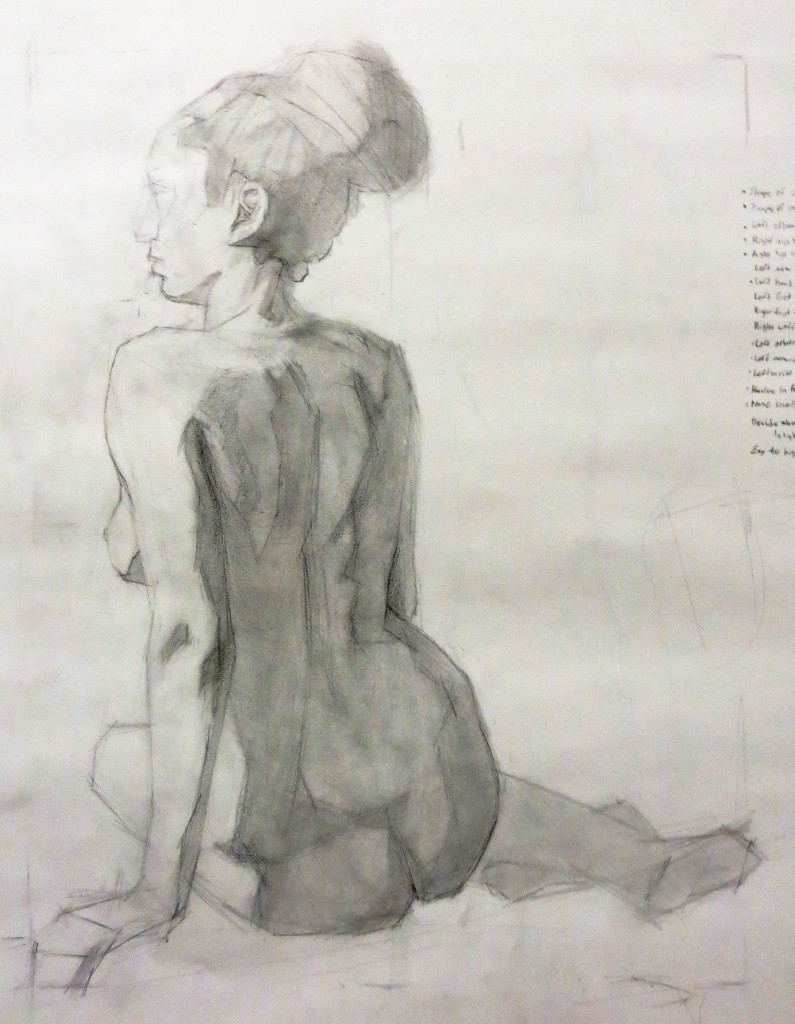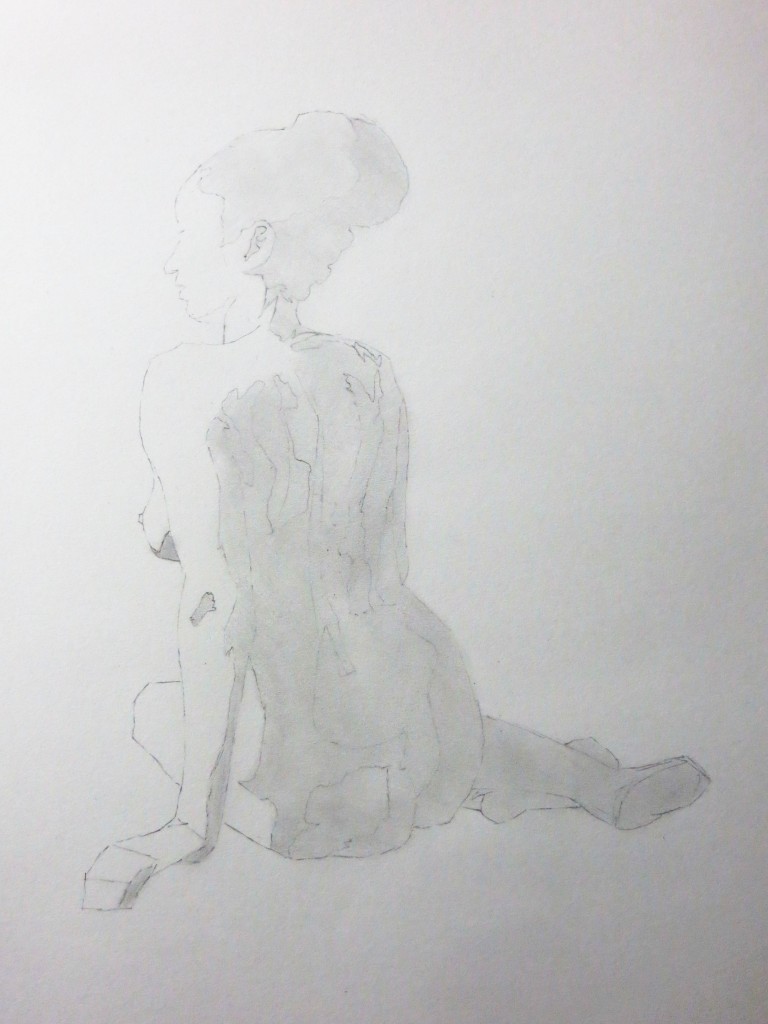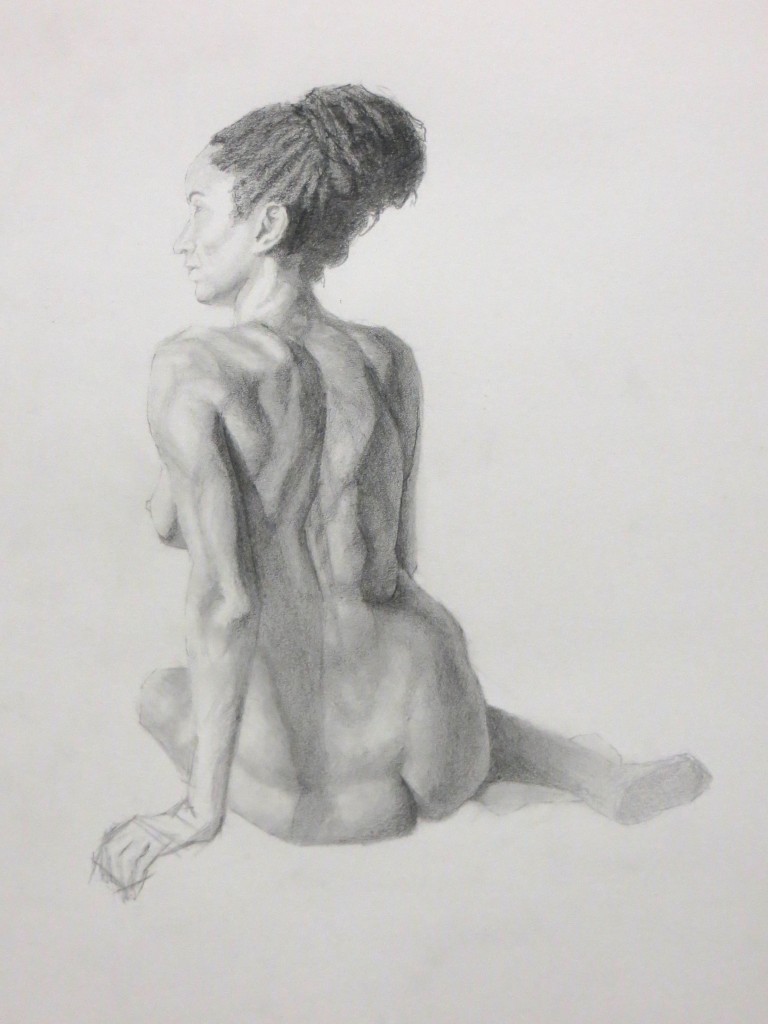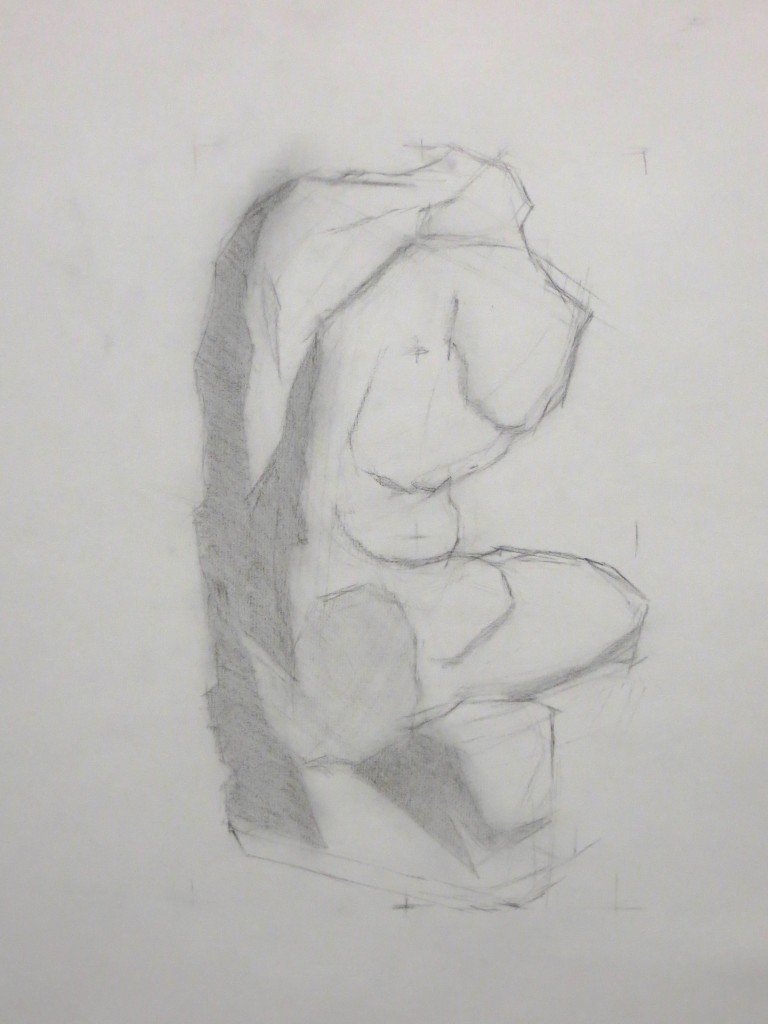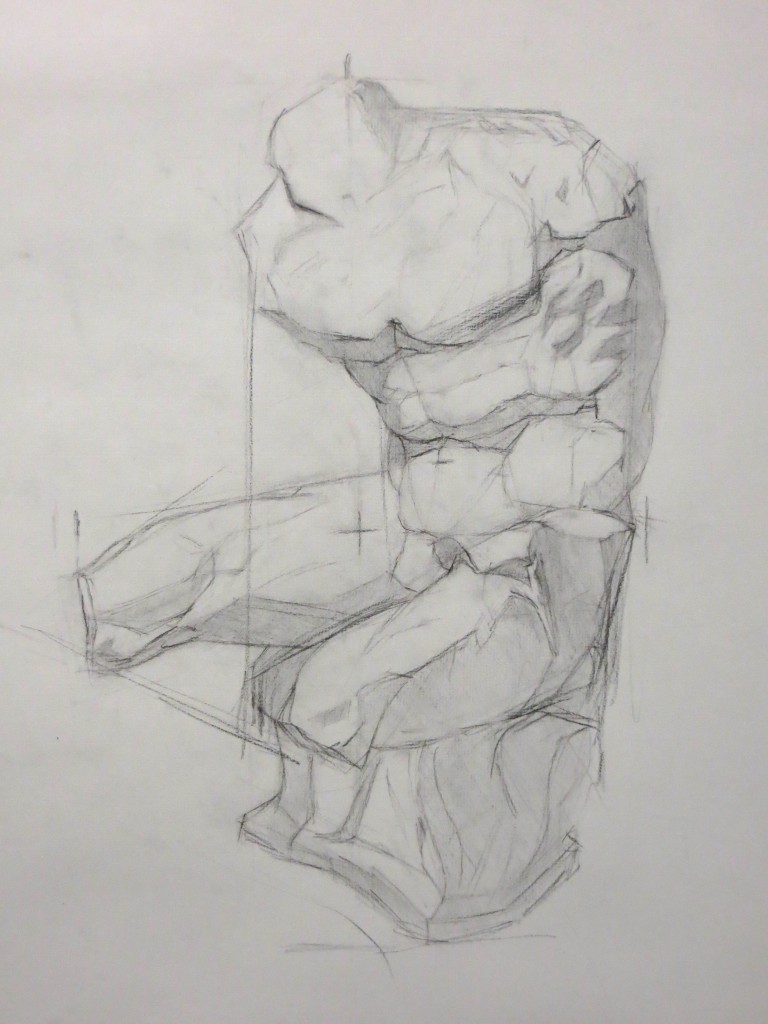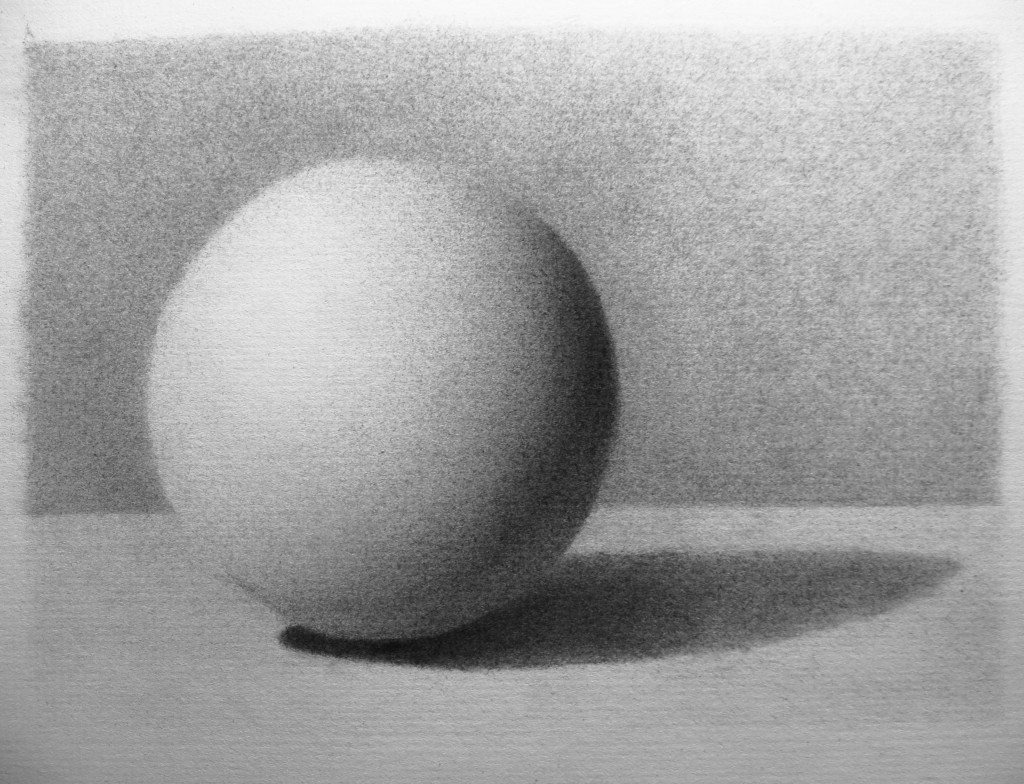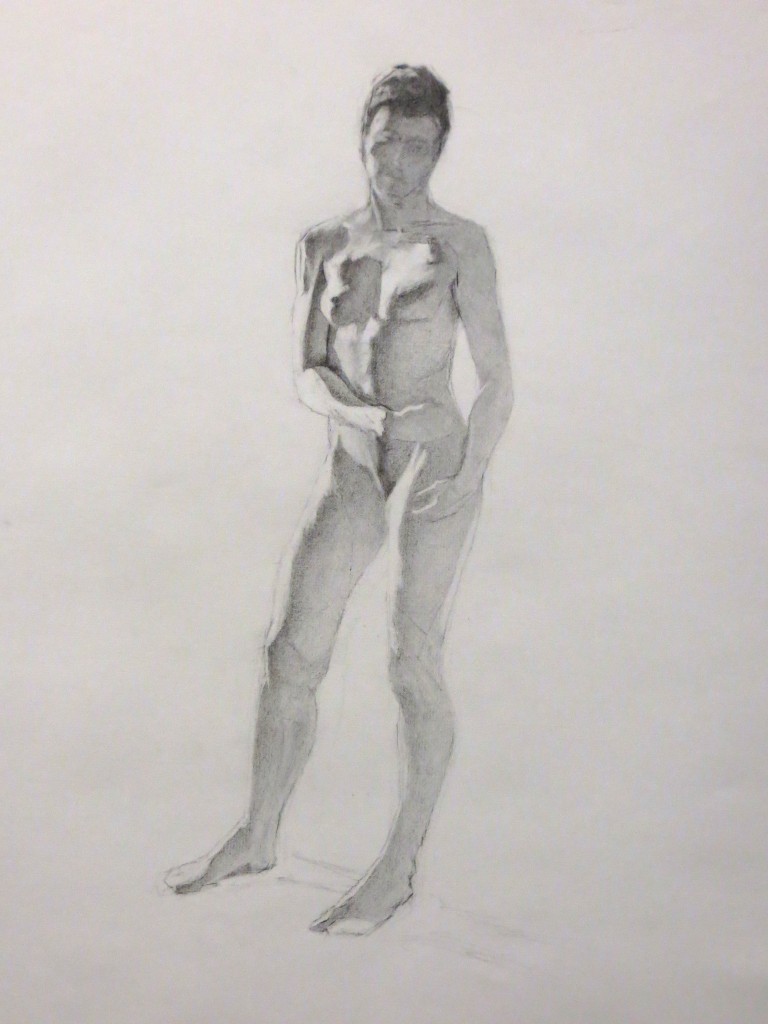Lilli Rethi is one of my construction-artist heros. According to the MTA,
During the construction of the Verrazano-Narrows Bridge in the early 1960s, a petite woman could be found weaving her way among the burly bridge builders with her drawing board and art supplies in hand. Artist and illustrator Lili Rethi became so familiar to workers building the bridge that they built her a little shed on site to shelter her from the wind and cold.
She particularly loved depicting heavy construction projects. As a young woman, she disguised herself as a boy and sneaked inside a Belgian mine to do some sketching. She also drew shipyards, canals and bridges under construction in Europe.
Rethi, born in Vienna in 1894, came to the United States in 1939 to cover the 1939-1940 New York World’s Fair for the Illustrated London News and remained here. In addition to sketching, she also illustrated more than 50 books over the course of her career.
As a child, one of my favorite books was Manic 5 – The building of the Daniel Johnson Dam. Lilli did the illustrations for this book. Here is the text from the jacket flap:
It is 703 feet high at its center arch, 4,310 feet long, and weighs approximately 6,000,000 tons. Building it required the services of over 3,500 workers, and consumed 15,000,000 bags of cement, 1,700,000 tons of sand, 2,500,000 tons of rock, and 72,000,000 gallons of water. The world’s biggest multiple arch dam, it is a dramatic part of Canada’s Manicouagan-Outardes Rivers hyrdroelectric project. Originally called Manic 5, it was officially renamed that Daniel Johnson Dam in honor of Quebec’s late Prime Minister.
This is the story of the building of that dam. The drama, the beauty, and the awesome magnitude of the undertaking are captured in these pages in sixty-four drawings by Lilli Rethi, an artist whose work, said the Christian Science Monitor, “pleases the technically trained man but at the same time holds the full romance of engineering in its grasp.”
Lilli’s drawings inspired my lifelong fascination with heavy construction. Back in the day, I would build my own Manic 5s in creek bed behind the house using Tonka trucks and sticks and mud. Now I paint massive earth movers on large canvas frames.


